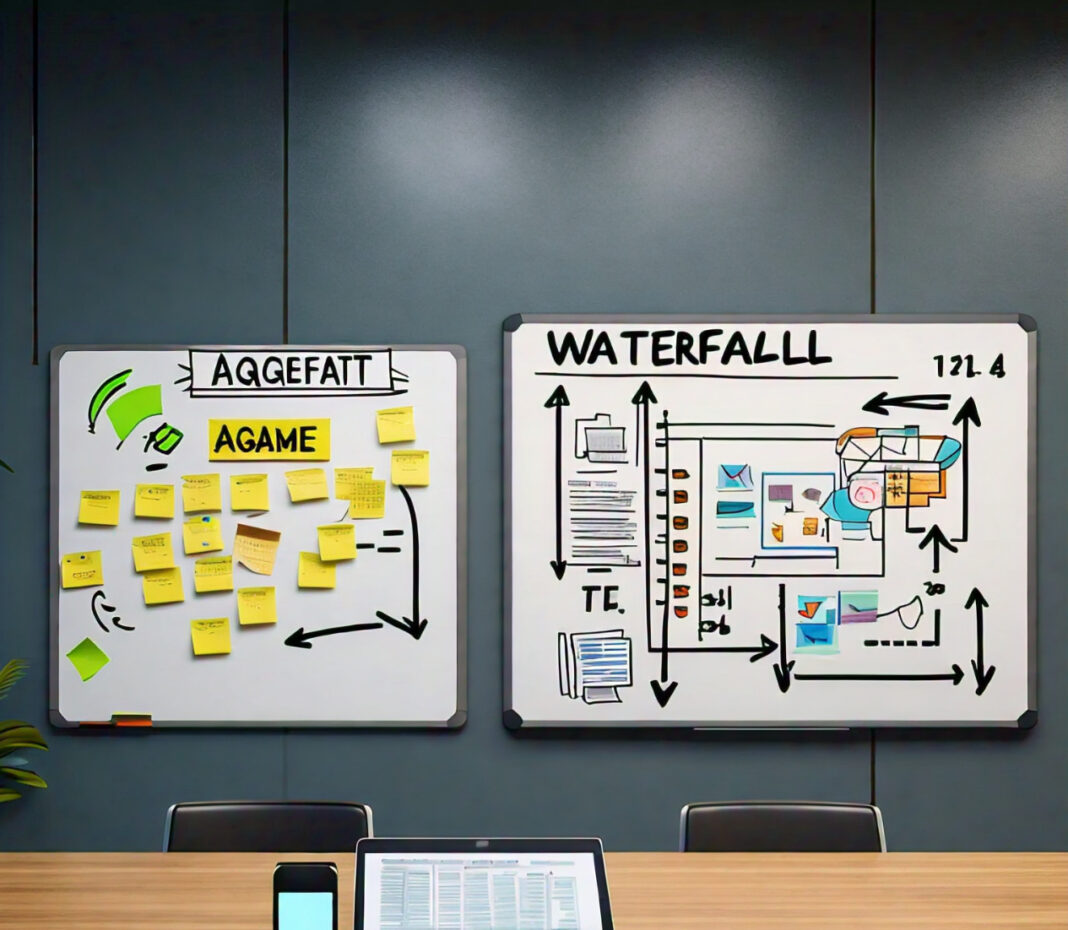Agile estimation techniques provide a rough estimate of the effort, complexity, and time that goes into completing work items or features within a project. Two such techniques, which share a common platform, are Story Points and Planning Poker in Agile. They help teams gauge relative work sizes of the items in a round-robin way, narrowing down with every interaction, while at the same time trying to mitigate stakeholder expectations, to make planned iterations or sprints possible.
This paper will take a better look at Story Points and Planning Poker, including their principles, benefits, how they are implemented, and their effect on Agile projects.
### Story Points: Overview
**Story Points** is a form of measuring unit used with Agile methodologies to get an estimate of the effort needed to complete a user story or task. In measuring, story points do not measure according to the common time-based estimation approach; rather, they deal with relative complexity and effort.
#### Story Points Principles
1. **Relative Estimation**: Story Points estimate a relative size of work items, not a measure of absolute time. So, a Story Points measure decides how stern that task will be in comparison with others.
2. **Abstract Measure**: Story Points are abstract and do not point directly to hours or days. In its exact sense, it provides for effort, complexity, and risk and thus allows for a very flexible and less rigid estimation approach.
3. **Team-Based Estimation**: Normally the Sweet Point estimates are developed in a collaborative approach through the Agile Team, drawing on the different knowledge and experience of its members.
4. **Velocity Tracking**: Story Points are a unit of measurement of velocity. This would thus determine how much work the team can deliver within a sprint. It also helps in velocity to determine the performance in the future and plan upcoming sprints.
#### Advantages of Story Points
1. **Centering on Effort and Complexity**: Story Points revolve around efforts and complexity and not time. This makes it an excellent way of estimating work, as tasks vary so much in scope within Agile environments.
2. **No Time Pressure**: Story Points are not directly related to time, so there is no pressure put on the team to estimate time with a high degree of accuracy. This might stress them out and result in an inaccurate estimate.
3. **Enables Relative Comparison**: This enables teams to compare the relative size of different work types so that one can plan and prioritize tasks according to complexity, not time.
4. **Increases Team Collaboration**: The collaborative nature of Story Point estimation encourages team discussions and ensures that multiple perspectives are brought to bear in making the estimate.
5. **Increases Planning Accuracy**: Velocity is tracked over multiple sprints, and teams can learn their capacity. Therefore, they can come up with accurate predictions for future work.
#### Implementation of Story Points
1. **Create a Reference Story**: Build consensus around a single reference story. This is the story upon which the rest will be based in terms of relative complexity and effort. A Story Point value, on a simple scale (e.g., 1, 2, 3, 5, 8, 13), has to be assigned to this reference story.
2. **Estimate Other Stories**: Take other user stories and compare them to the reference story to figure out the relative size of the other stories. Then, award Story Points based on how the effort for each story would compare to the reference.
3. **Use Estimation Techniques**: Use techniques like relative sizing, historical data, or expert judgment in supporting the estimates placed on a User Story. Teams can also use a scale, for instance, a Fibonacci sequence to represent varying complexity levels.
4. **Give Regular Reassessments**: Periodically, review the Story Point estimates based on experience and new information, changes in team capacity, or changes in the project requirements.
5. **Track Velocity**: Track the measurement of team velocity, that is, the number of Story Points done every single sprint. This data can then be used for future sprints and estimation with more accuracy.
#### Consideration and Challenges
1. **Subjectivity**: The estimates in Story Points are generally related to what the team members feel the effort and complexity would be and, in turn, are subjective. So, again there is a need to adhere to consistency and agreement within the team itself.
2. **Variability**: Various teams might rely on different scales or reference stories. Therefore, this leads to diversity in Story Point estimates. Adherence to consistency within one team is very important for precise tracking and planning.
3. **Overfocus on Points**: When teams pay too much attention to Story Points, they miss the real purpose of their usage. They should be used as a tool for relative estimation and planning, not as an exact measure of effort.
—
### Planning Poker: An Overview
**Planning Poker** is a collaborative estimation technique to project the effort required for user stories or tasks. In essence, it combines all the benefits of story points with a structured and interactive process that stimulates team participation and consensus.
#### Principles of Planning Poker
1. **Consensus-Based Estimation**: Planning Poker engages all team members in the process of estimation, seeking consensus on the Story Point value for every user story.
2. **Gamification**: It is a fun way of estimating—using cards to make the vote.
3. **Anonymity**: Makes anonymous initial estimates to avoid the biases and influences of more vocal team members.
4. **Discussion and Refinement**: The team members will discuss their estimates and justify the thinking behind their votes. Based on this discussion, the estimates will be refined.
#### Benefits of Planning Poker
1. Encouraging team collaboration: Planning Poker will help ensure an all-inclusive approach to the thinking of all team members. This way, members of the team assume the responsibility to contribute to the process of upfront planning.
2. Bias reduction: Because of anonymity in voting, there are lower chances of bias and influence while providing more accurate and unbiased estimates.
3. Promotes group consensus: Through the iterative discussion process, consensus and agreements on the estimates are built that then help to improve the estimation accuracy and reliability.
4. **Gamified Aspects**: It boosts engagement, making the estimation process an engaging and participative procedure in Planning Poker. This boosts the morale of people with more involvement in a team.
5. **Learning Facilitation**: Planning Poker gives the team the way to learn from others, and, therefore, to share expertise to enhance their learning or understanding of work and the estimation process.
#### Planning Poker Implementation
1. **Card Preparation**: Each person from the team should be given a set of Planning Poker cards, each carrying a different Story Point value (e.g. 1, 2, 3, 5, 8, 13, 20). This way it should be performed. Physical or digital cards can be used.
2. **Present User Stories**: Present the user story or task to be estimated ensuring equal understanding across the team on what is needed and the context within which it is to be developed.
3. **Initial Voting**: Team members vote on the user story by selecting a card that represents their estimate. These are kept hidden until all have voted to avoid influencing the other team members.
4. **Discuss Differences**: Where there is a large gap between the two estimates, discuss reasons for differences. This can offer insights, clarify requirements, and raise questions that address uncertainty.
5. **Revote and Refine**: The team has a discussion on it and then revotes to refine the estimates further. Discussion and voting continue until a consensus is reached by everyone in the team.
6. **Record Estimates**: Once consensus is achieved, the estimation of the user story is recorded. Move on to the next item.
#### Challenges and Considerations
1. **Group Dynamics**: Group dynamics and strong dominant personalities may further bias the estimation process. Facilitators must ensure all team members get to contribute and that the discussions are well-balanced.
2. **Time Constraints**: Planning Poker sessions can be pretty time-consuming, especially for large backlogs. Efficient facilitation and time management are prerequisites to keep things on track.
3. **Estimation Fatigue**: Multiple estimation sessions can result in the fatigue of resources and hence affect the accuracy of estimations. Regular breaks during estimation sessions and focus on individual estimations can eliminate this issue.–
### Difference Between Story Points and Planning Poker
Story Points and Planning Poker both are techniques applied in Agile estimation however they are both different in their application and have a set of advantages. Below is a difference between the two:
#### Story Points
– **Focus**: This shows the relative size and complexity of work items. The emphasis is on effort, not time.
– **Implementation**: The estimation will be designed considering relative comparison and also historical data. There isn’t a specific estimation process or technique to be followed.
– **Benefits**: It provides flexibility, no stress on time; one can compare relative items. It is nice for tracking velocity and planning.
– **Challenges**: It can be subjective, and teams cannot have consistency. It needs periodical reassessment and adjustment.
#### Planning Poker
– Focus: Allows for collaborative estimation and building consensus. The structured and interactive process results in the estimation of Story Points.
– Implementation: A set of user stories is generally presented, followed by a facilitation process of anonymous voting, discussion, and refinement of votes. Each team member collaboratively participates in the process of estimation.
– Benefits: It encourages collaboration, reduces bias, and builds consensus. It makes the process of estimation interactive.
– Challenges: This can lead to results based on group dynamics; it can also be time-consuming. Effective facilitation and management is essential
### Conclusion
Story Points and Planning Poker have been useful estimation techniques in Agile project management; each tends to bring its advantages in terms of estimation of effort and complexity. Story Points provide a flexible and abstract measure of work about relative size and complexity. Planning Poker liberalizes estimation through collaboration, and consensus-based voting, and is particularly interactive and engaging.
A well-considered understanding and application of these concepts and techniques can remarkably enhance the accuracy of estimation, thereby improving team collaboration and project planning. If Agile teams choose the right application techniques, considering team needs and project needs, it will be easier to work with and plan their work into sprints. This will deliver high-quality software, meeting customer expectations.






